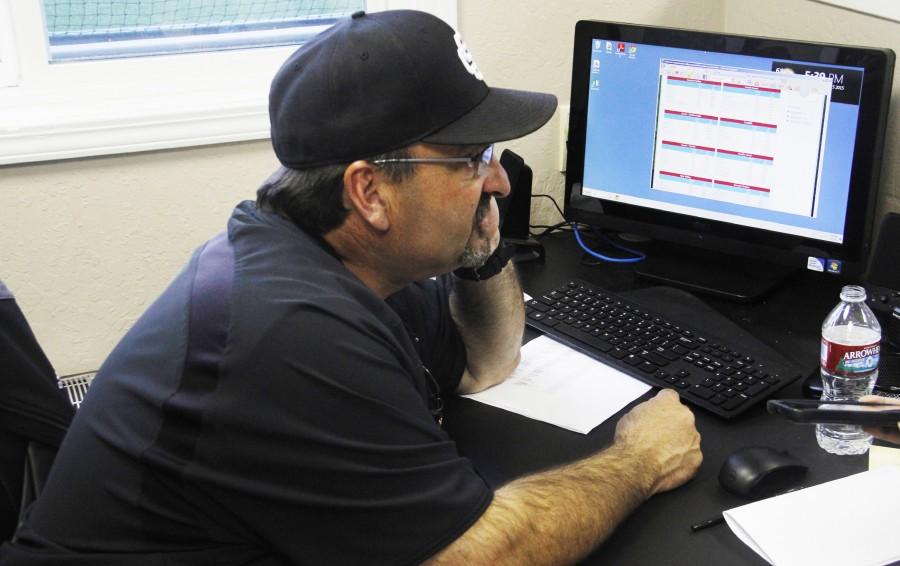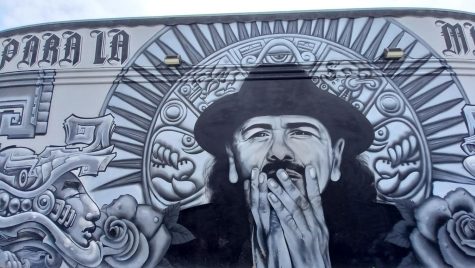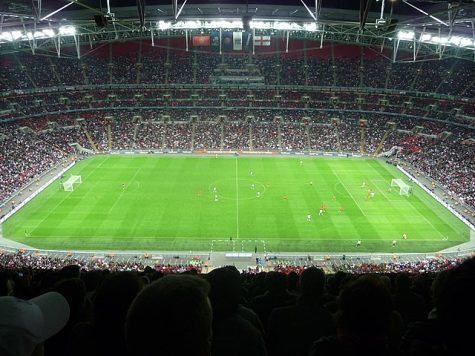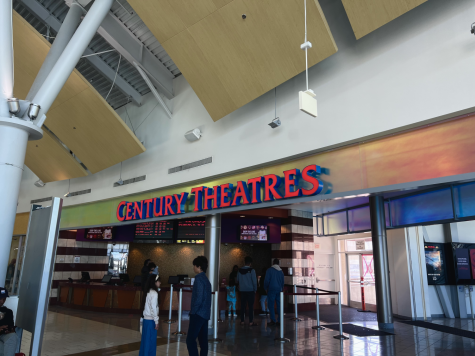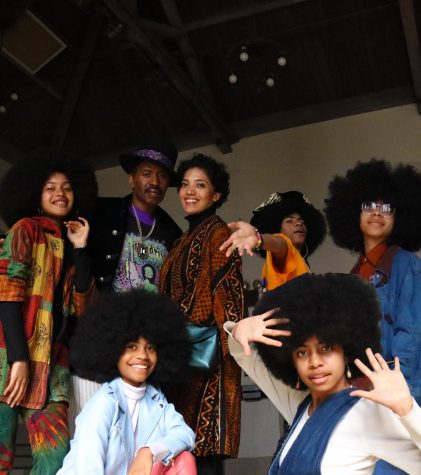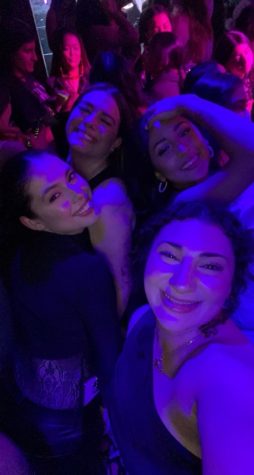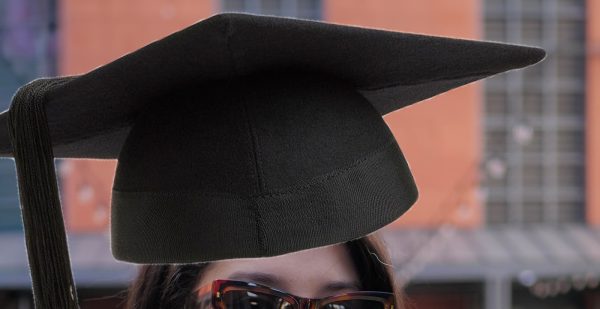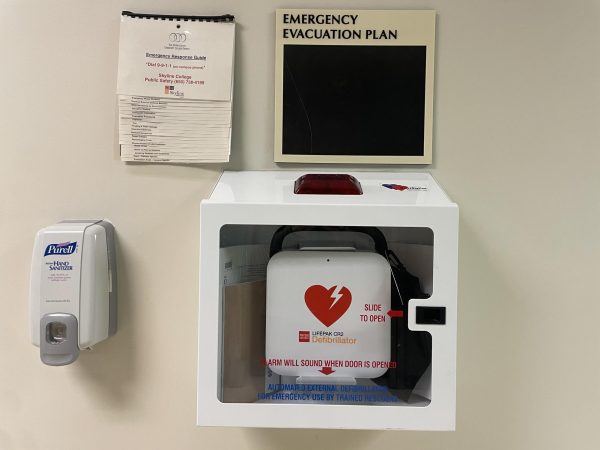Post Skyline recruitment
Skyline College Baseball Head Coach Dino Nomicos looking up information on a computer at the campus baseball field booth after a game during the Spring 2015 semester.
Most student athletes dream of successfully being recruited and getting the opportunity to play for their favorite Division I school. However, it’s a fact that this isn’t going to happen for everyone. But the Skyline’s baseball team’s hard work has paid off and they currently have several NCAA prospective recruits:
- Aldo Severson
- Tom Caulfield
- Jake Mellenthin
- Alex Arnold
- John Murphy
- Shawn Scott Jr.
- Keaton Ichman
- Phil Caulfield
- Nobu Suzuki
- Michael Franco
- Nick Bongi
- Ismael Orozco
These players are being recruited from various school such as Chico State, Sonoma State, San Jose State, Azuza Pacific, and UC Riverside, and the list goes on and on.
The NCAA has four levels: DI, DII, DIII and NAIA schools. Each division has a specific set of requirements in order to qualify for a scholarship called the NCAA Clearing house. The NCAA Clearinghouse is an essential step in becoming eligible to play college sports. Thousands of potential college athletes register with the NCAA every year. It is vital to playing NCAA college sports and receive a scholarship at the Division 1 or Division 2 level. It’s required to register and be cleared by the NCAA. The Eligibility Center is the organization within the NCAA that determines academic eligibility. Junior college transfers must have a 2.5 grade point average in their transferable credits in order to be eligible for a four-year school.
Aside from the work in class and on the field, the college recruiting process can be a great and naturally exciting experience for many students athletes. Going on official recruiting campus visits is a once in a life time experience. But every athlete’s recruiting process is different, and each one will handle it their own way. It can be very draining for certain athletes; it can even be strange at times, or it could possibly be the the time of their lives.
“It is a great feeling to be wanted and see your hard work pay off,” Trojans outfielder Michael Franco said. “Having college coaches call and email me asking me questions is a great feeling. There’s not to much I can do but be patient and wait it out to see what happens.”
Once again the recruiting process is unique and different for everyone. Sometimes it can get a little strange and awkward at times with colleges’ abstract recruiting methods.
“I’ve had a coach direct message me on Twitter asking me questions,” Trojans infielder Phil Caulfield said. “It just felt weird. But I trying to enjoy this time. I just want to try to stay as persistent as possible, and make the best choice for myself for the next two years.”
These dreams weren’t accomplished alone. The coaches for Skyline’s baseball team actively worked to get to their players names out to the NCAA.
“I meet and sit down with all the sophomores and discuss with them about potential schools,” Trojans Head Baseball Coach Dino Nomicos said. “Not many school are looking for you to send them game film on a player if a player is being recruited it is all word of mouth. They want to know what kind of kid their getting, with grades and character.”
Having coaches who care and that put players in the right opportunities are key. They allow the players to focus on things that they can control, like their play on the field and their work in the classroom, and their hard work will pay off in the long run.
“I’ve left the recruiting stuff up on coach Dino,” Trojans infielder Nobu Suzuki said. “It all was happening during the season, so I was trying not to get distracted. I was trying to focus on the season. People kept asking me how many schools or what school had called me everyday. It was a little annoying and I felt little pressure from it. Coach Dino helped me to communicate with coaches. I thank Coach Dino for all of this. I wasn’t good enough to be where I am last year. He kept letting me play as a second baseman. I really appreciate the opportunity he gave me.”
“You have to realize what school is the best fit for you socially, academically, and athletically,” Caulfield said. “Coach Dino really helped me realize that. When I went on my official visit to a school in Massachusetts I had decided if this was the best choice for me. Ultimately I decided it wasn’t.”
Being patient is really the only option in the recruiting process, especially for junior college baseball players. Junior college transfers often tend to wait after the Major League Baseball (MLB) draft to decide where to go, since more spaces may be available if certain players leave from an NCAA school. Practicing patience and being available to coaches is important.
“Not too much you can do but wait,” Outfielder Michael Franco said. “If you wait it out you can end up in a better situation with more scholarship money or play time. You just have to be patient and understand the process.”
Although none of Skyline’s baseball team have officially committed to any schools, they are expecting to have numerous signing day signings.
So let’s have one last cheer for our soon-to-be former Trojans in their next step in their collegiate careers. Best of luck!



